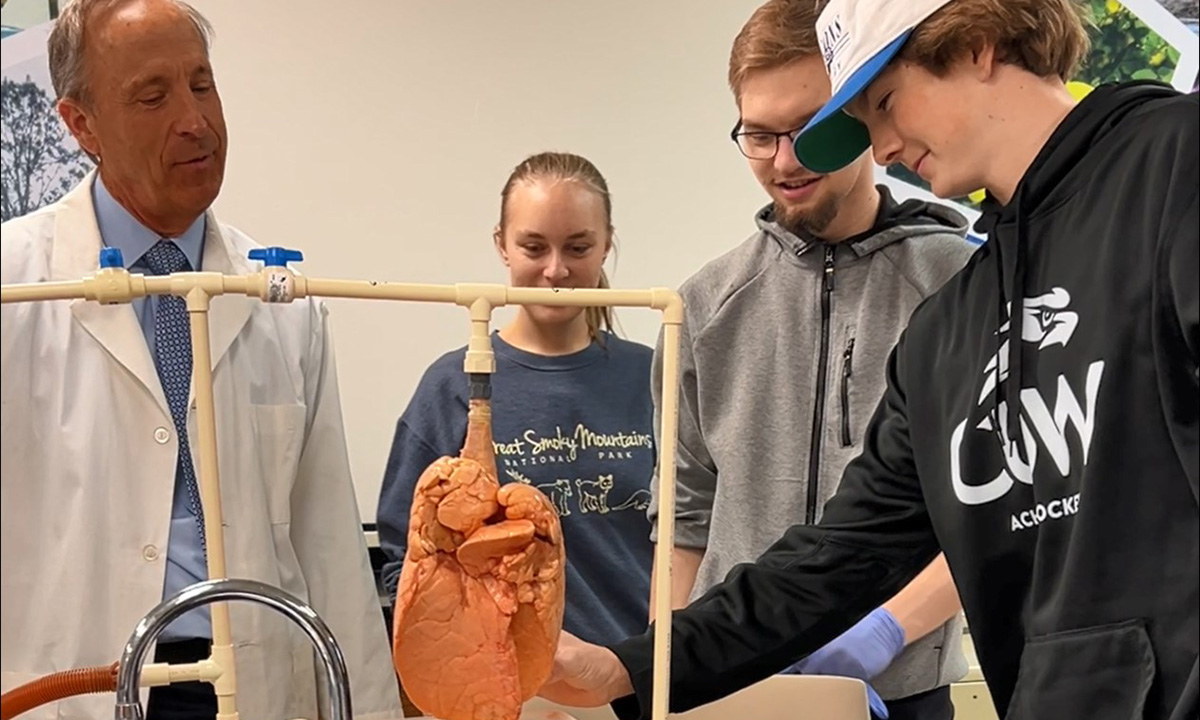
Ever wonder what inflated pig lungs look and feel like? Well, maybe not. But students in a Biology 142 class recently had a chance to find out!
And no, it’s not just a chance to be grossed out. In fact, the students’ reactions were generally more “Oh, wow!” than “Ew, gross!”
Rather, it’s a chance to better understand how organs such as the lungs actually function inside our bodies (or pigs’ bodies, as the case may be).
“I get a lot of students who are in the radiology and sonography programs along with students from other biology majors such as environmental science,” said Dr. Tom Saleska, professor of science at CUW. “This lab was all about the structure and function of different mechanisms of gas exchange; that is, between oxygen and carbon dioxide.”
Hands-on learning
This particular lab is more of a “show and tell” demonstration than a hands-on lab activity, Saleska explained. But it provides a great demonstration of the form and function of the pig lungs, which are, in fact, very similar to human lungs.
“We also looked at fish gills, and compared that method of gas exchange to that of human lungs, and also mink lungs, which they have a chance to dissect,” he added. “It’s a great way to illustrate the marvelous complexity of God’s creation.”
The demonstration is a regular part of Saleska’s class curriculum, typically conducted during the spring semester. As you can imagine, it’s one of the more memorable experiences students in this class have during the year.
Click below to watch a video of the demonstration!
Want in?
Concordia University Wisconsin is a Lutheran higher education community committed to helping students develop in mind, body, and spirit for service to Christ in the Church and the world. In the Department of Life and Earth Sciences, our vision is to provide you with a rigorous understanding of the world around you. By taking a “hands-on” approach to learning, we’ll help prepare you for vocations in research, education, graduate studies, and much more.